Assess results by measuring engagement and funnel progression within the target accounts vs. focusing results on number of leads, volume, and attribution source. Account-Based requires new processes, and hence new metrics.
Keep it simple: Focus on Target Account Engagement and Pipeline as precursors to Closed Won Revenue.
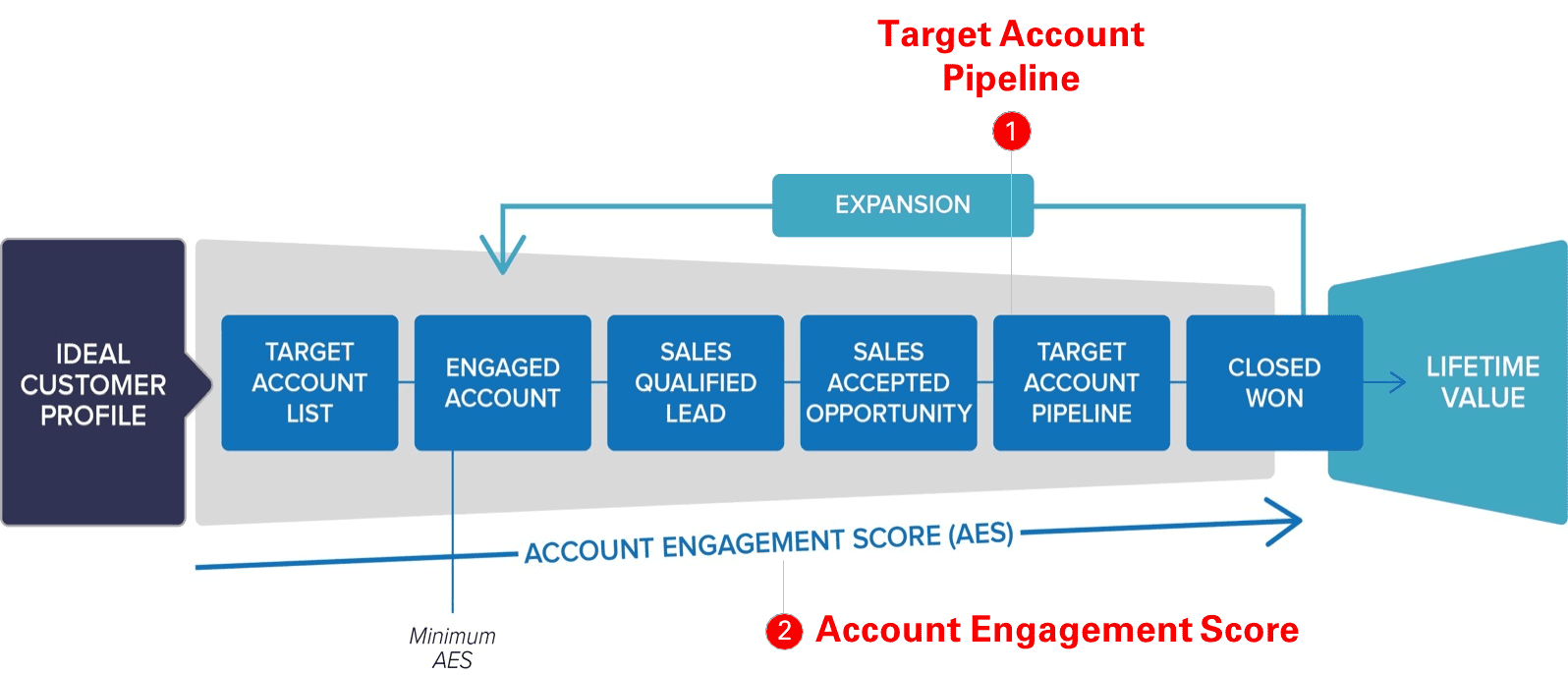
QUICK STEP PROCESS
| STEP | DESCRIPTION | DELIVERABLE | RESOURCES |
|---|---|---|---|
| 1. | Identify account-based metrics to track | Stakeholder agreement on account-based metrics | Account-Based Metrics |
| 2. | Establish baseline metrics | A report with the current baseline for the chosen account-based metrics | |
| 3. | Establish account-based goals against baseline | Agreement on achievable account-based program goals | Example: Account-Based Goals |
| 4. | Develop reports and dashboard | An accessible dashboard to review account-based results | Account-Based Program Dashboard |
| 5. | Develop a program-specific forecast | A program-specific forecast | Account-Based Program Forecast |
IDENTIFY ACCOUNT-BASED METRICS TO TRACK
Traditional marketing campaigns focus on leads (specifically, MQLs), while account-based programs track progress against target accounts. Adopting a set of account-centric measurements is key to effectively measuring and managing account-based investments.
These are the most important metrics for measuring account-based success over time:
-
Engaged Accounts: The number of accounts that are meaningfully engaged in a given period of time. Meaningful engagement is measured using the Account Engagement Score (AES) and the established minimum AES. Within Oracle, Account Topic Scores are used to measure relevant account engagement through marketing channels.
-
Opportunities Created: The number of opportunities created within the target accounts.
-
Target Account Pipeline (TAP): Total value of pipeline created with target accounts. TAP is the best indicator of future revenue and for organizations with long sales cycles is normally key metric for marketing and sales development efforts.
-
Target Account Revenue: Total annual revenue from target accounts.
These metrics will be used for both overall measurement (monthly, quarterly and annual measurement against the full account list) and for measuring performance of individual programs.

ACCOUNT-BASED GOALS
Baseline goals are established for all of the selected metrics.
-
Engaged accounts and % engaged—Minimum AES is defined and tracked to tally the program accounts engaged. Minimum AES depends on what engagements are tracked and on the levels of engagement. For example, companies with strong brand recognition and high average engagement will set a higher minimum AES threshold than one with minimal recognition and engagement.
-
Opportunities and Target Account Pipeline—The number of opportunities created against the number of target accounts and the value of the opportunities created. The opportunity rate is key to establishing achievable goals and benchmarking performance over time.
-
New revenue created, ACV, and deal velocity—Account-based programs lift deal size (ACV) and increase deal velocity—both of which increase revenue. Changes in deal velocity develop slowly, so put tracking in place and expect to wait for the measurable results to materialize.
ACCOUNT-BASED PROGRAM DASHBOARD
The account-based program dashboard presents the metrics of the organization’s account-based programs. Dashboard metrics are the basis for monthly, quarterly and annual reporting and capture the high-level results across the entire target account list. The dashboard should deliver the following:
-
Capture all key objectives identified for account-based. The example below includes the most common account-based metrics.
-
Be accessible to the entire account-based team. The metrics in the dashboard is how the team will be measured and what the team needs to actively manage investments against.
-
Filterable for specific accounts and account segments. Active management requires the ability to view by various account segments, such as account tiers, industries or inclusion in specific programs.
-
Use agreed to data sources and definition. The data needs to be reliable and not subject to differences that exist between disparate systems or definitions across groups. A standard source for measurement for each metric needs to be identified and used in all reporting and evaluation.
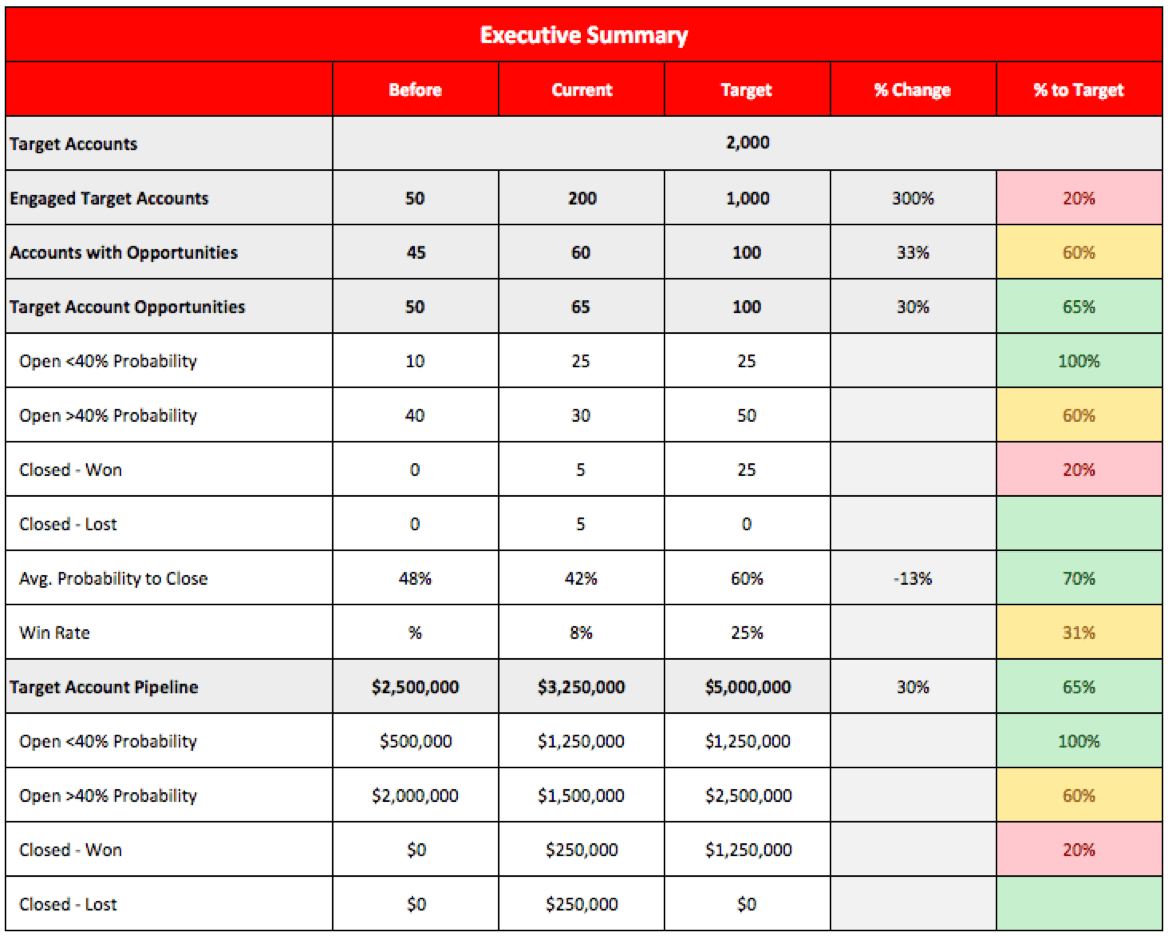

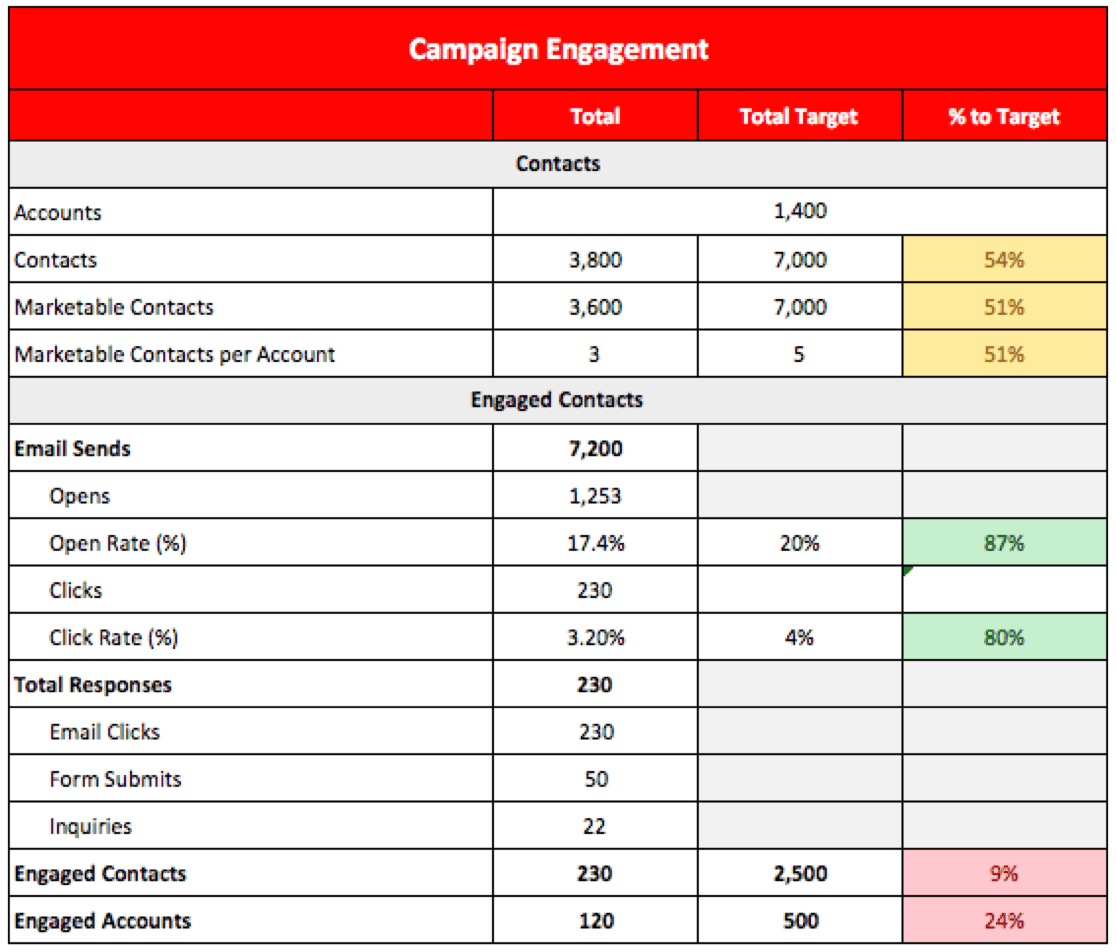
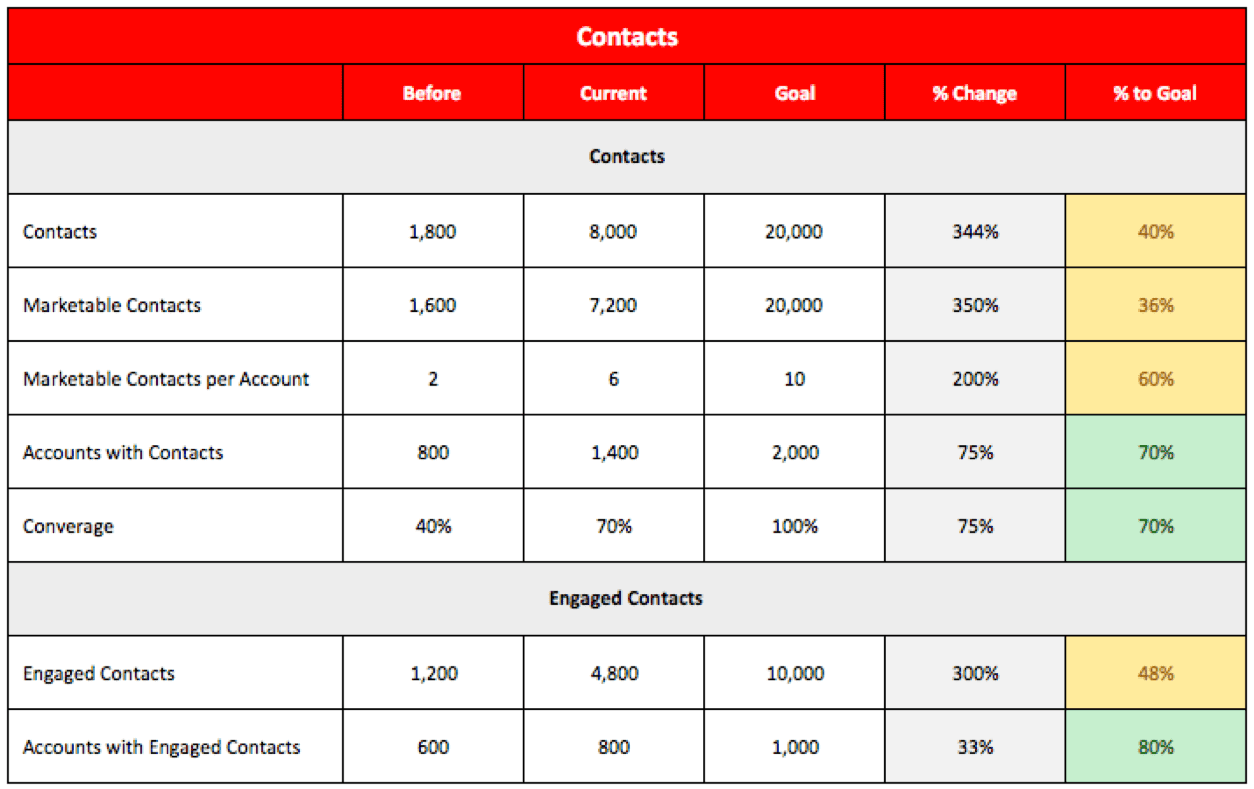

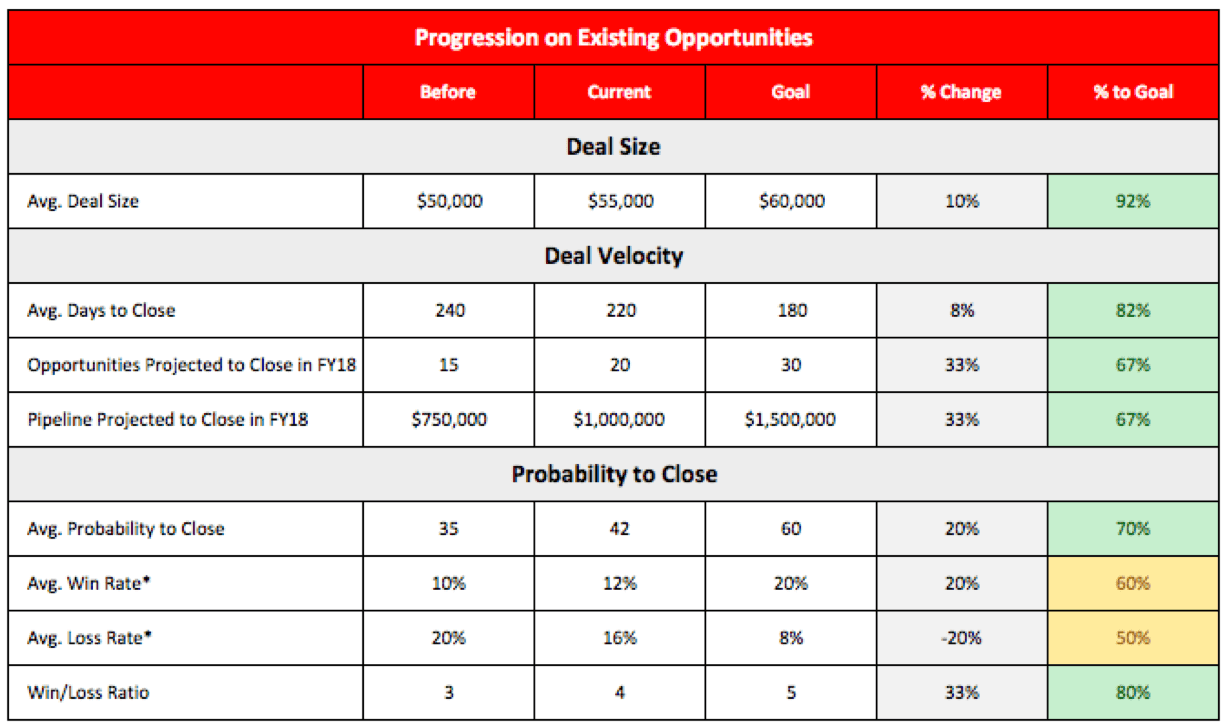
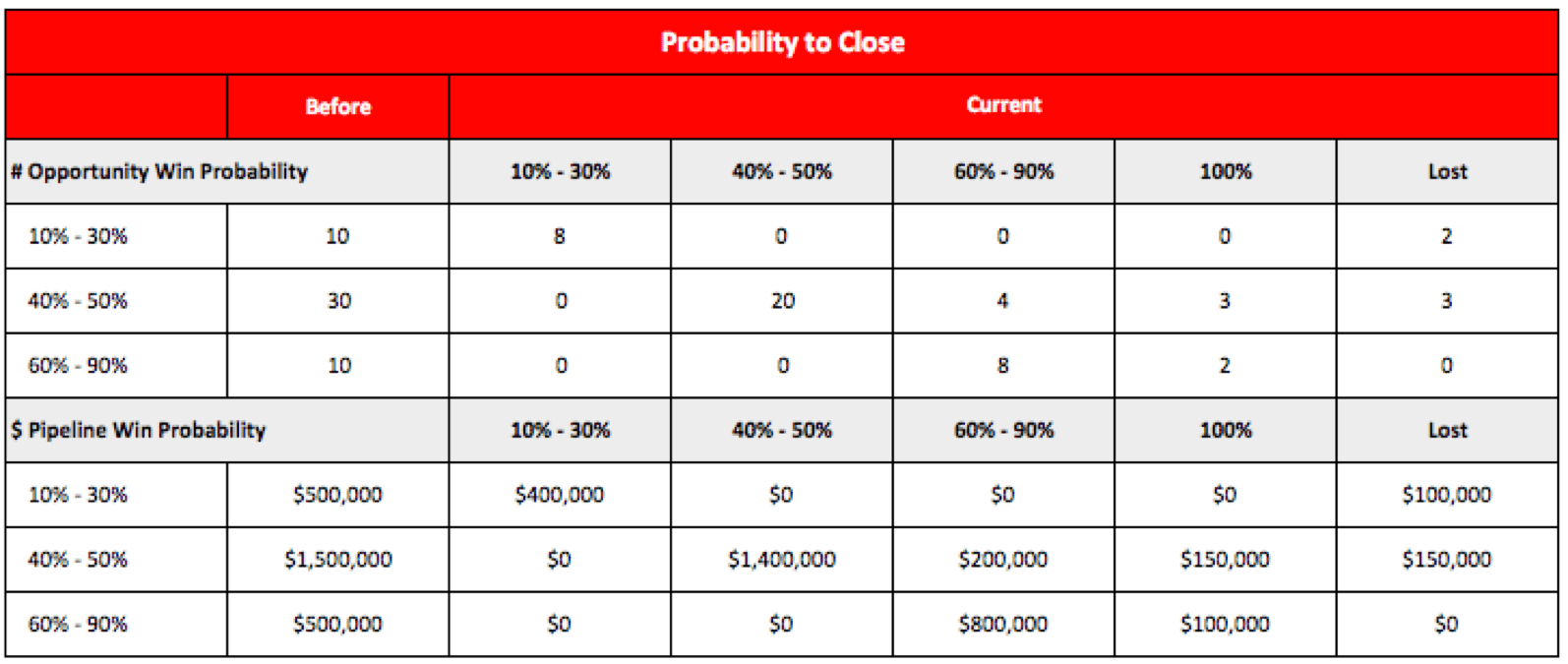
ACCOUNT-BASED PROGRAM FORECAST
The account-based program forecast is a progression of metrics that forecasts target-account pipeline and revenue. In other words, it predicts program effectiveness.
-
Start with the number of selected accounts. Tracking program progress against a set of target accounts is at the foundation of account-based metrics.
-
Fill in expected conversion rates. Start with historical points for typically outbound programs. Expect modest initial improvements in conversion rates, and improvements continuing through at least the first year.
-
Calculate the expected ACV, the average expected ACV of the selected accounts.
-
Focus on TAP success metric. The model includes other metrics, like closed won and revenue, but they take longer to develop. You can track TAP immediately and, if the ICP is properly developed, it is your best predictor of revenue.
READINESS ASSESSMENT
| COMPONENT | EVALUATION CRITERIA | |
|---|---|---|
| 1. | Account-based measurement | Have account-centric metrics been identified (marketing leads excluded)? |
| 2. | Target Account Pipeline | Has marketing identified how to measure Target Account Pipeline? |
Send your Account-Based questions to kelvin.gee@oracle.com